Reviewed By Melissa Arnold
No matter how old you are, there’s something fun about celebrating all things weird and spooky on Halloween. To get into the spirit with your family, consider Rest in Peace (Scoot Comics), an adorable rhyming picture book from debut author Tyler Ham.
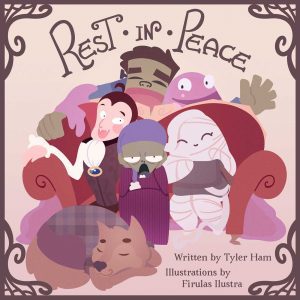
The story centers around Ghoul who just wants to do is go to sleep after a long Halloween but his monster pals — Dracula, the Werewolf, the Mummy, Frankenstein’s Monster and the Blob — want to keep the party going.
Raised in California, Ham was not one for horror, but he loved Halloween and “slightly spooky” entertainment. Now a father of two, Ham has embraced that lighthearted spookiness with a cast of funny monsters and a positive message of friendship that even the youngest kids can enjoy.
Tell me about your childhood. I assume that you loved horror movies.
I was a very timid child, but I loved Halloween, so “spooky” has always been my go-to genre. It’s funny how much I love horror movies now, because when I was a kid, they scared the heck out of me! I wanted nothing to do with it. But at the same time, I always loved Halloween and mildly spooky things. Michael Jackson’s “Thriller” video was about as far as I could go.
I read something in a book once about the array of emotions we can experience in life that really stuck with me. Basically, you can feel happy, sad, excited in the real world, but those emotions typically come from a place of safety. On the other hand, when you’re scared, it’s because you don’t feel safe. That’s not a feeling that you want. But when you watch a scary movie, you can tap into the experience of being scared in a safe way, and there’s something fun about that.
So did you do a lot of writing in that ‘spooky’ genre as a kid?
I was a creative kid, though more artistic – more into drawing, painting, papier mache, that sort of thing – but never writing.
I wasn’t a great student. I did the work but didn’t particularly enjoy it. And I didn’t like English class, either. But in high school, I had two really great English teachers who actually loved my writing assignments. They said I was a good storyteller and would even read my stuff in front of the class.
When I graduated, I went to film school at California University of Monterey Bay wanting to direct, and the same thing happened. I wasn’t interested in the writing aspect, but was often praised in classes for my screenwriting so it was clearly an ability I had.
After college, I moved back home with my parents and was looking for work. My mom met someone at a charity event who had just opened a new school for 3-D art. I was always curious about that, but didn’t know how to begin learning about it. And then this opportunity came along. I took a tour and enrolled for the next semester, which was only six days away. That experience ultimately took me into the visual effects industry. I spent about 16 years working in the digital effects industry as a 3-D artist for film studios, and then I switched over to the toys and collectibles industry. Writing was something I did for fun.
When did you start thinking about writing a children’s book?
My oldest daughter was one of those babies that just wouldn’t go to bed. She loved to be read to, so we would sit in our chair and read book after book. Over time, I learned that while some kids’ books are great, others are honestly just bad. I knew I wasn’t going to write anything legendary, but I figured I could at least do better than some of the books I’d seen.
So one night, I put my daughter to bed and went into my office. I knew I wanted to write about Halloween, since it’s my favorite holiday and it’s a fun time for kids, and I knew I wanted to have different kinds of monsters. As I wrote, I’d read it to myself and make sure the rhymes felt natural and not clunky.
Did you pursue traditional publishing or self-publishing? What was the process like?
The first draft was actually completed nine years ago. I shopped it around, but no one was biting. I’d get discouraged and leave it for a while, rewrite parts and try again. Eventually I was working for a publishing company in product development, and they would occasionally have employee submissions. The woman who was reading the manuscripts contacted me and said that while my book wasn’t the right fit for our company, it was really good, and she invited me to join a writing group. She was my first mentor, and the book went through many revisions until it was really polished.
Ultimately, a friend of mine wrote a comic book, and his company was starting a children’s book division. I submitted my original Halloween story, along with ideas for other holiday concepts featuring this cast of monsters, like Valentine’s Day and the Fourth of July. They liked the ideas and agreed to publish me.
Do you relate to Ghoul, the main character of ‘Rest in Peace’?
Yeah! It doesn’t make me look great, but I share a little bit of that lighthearted grumpiness — my kids tease me and say “Hey, you’re grumpy like Ghoul is!” But he has good intentions, just like I do.
What was it like seeing the finished product after all those years?
It was just surreal getting those first copies of the book, especially after nine years of work. This story was meant for my first daughter, and it took so long that now I’m reading it to my second daughter’s kindergarten class. She wasn’t even in the picture when this all began!
How did you find the illustrator, Firulas Ilustra?
I found Sâmara, who along with her illustration partner Thaís form Firulas Ilustra, on the social media platform reddit. She lives in Brazil — she had some pictures up and I really liked her style. I could tell right away that she really understood what I was envisioning and connected to the idea.
Do you have plans for future books?
I have plans to publish several holiday-themed books with this cast of monsters! The next book in the series, The Yule Ghoul (available now!) continues the story of Rest In Peace, and has the Ghoul throwing his first Christmas party! He is very excited but is afraid none of his monster friends will come. The follow up Valentine’s day book is written, and a few more are in various stages of completion.
What’s the target age group for ‘Rest in Peace’?
It’s interesting — originally the target age was 3 to 7. But then I read it to my daughter’s 5th grade class and they really loved it. The publisher also suggested that there are 9- and 10-year-olds that would get a kick out of it as well.
Is there a message you hope kids take away from reading this?
Ghoul has this difficulty where he gets so frustrated with his friends being in his space after a long Halloween, but they really just want to spend more time [with him]. It’s about accepting people into your life and being patient with them, even when they do things that you don’t understand. All of our friends have their own little quirks. And I also hope that people see that monsters can be fun!
‘Rest in Peace’ is available now through your favorite online booksellers. Follow Tyler Ham at his official website, www.tylerham.com.

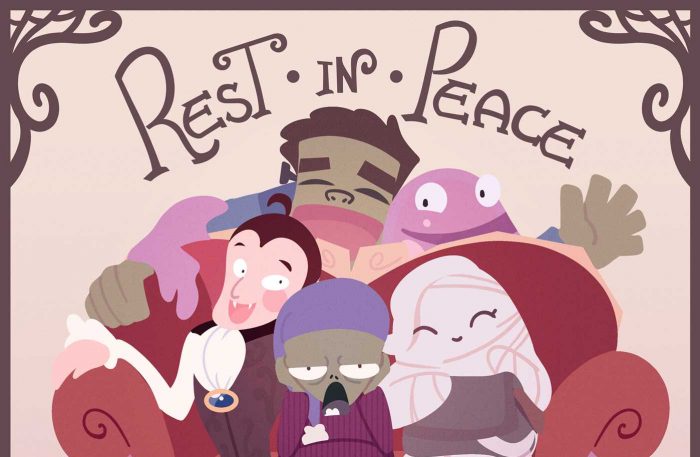

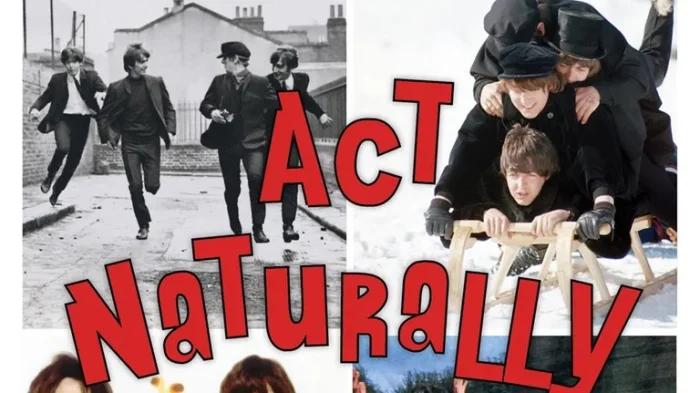

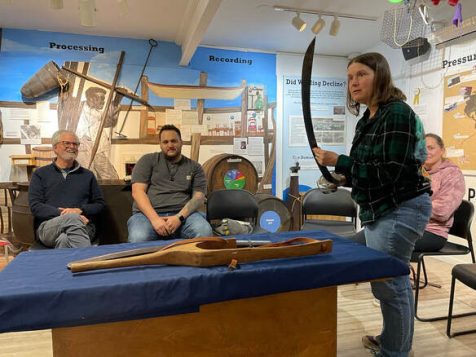



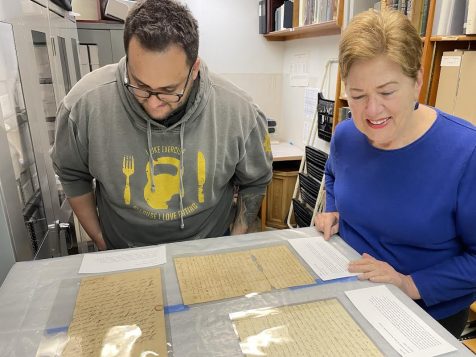
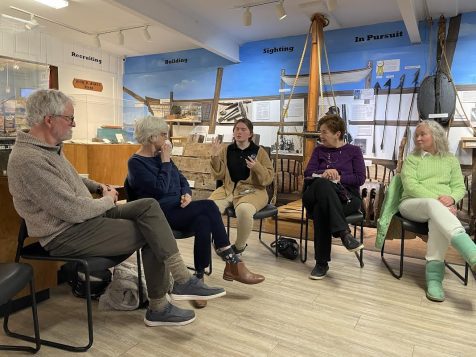
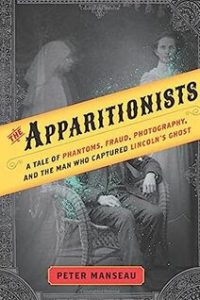 The first session takes place on Tuesday, Sept. 26 at 6:30 p.m. and covers The Apparitionists: A Tale of Phantoms, Fraud, Photography, and the Man Who Captured Lincoln’s Ghost by Peter Manseau. Participants of this session will explore the intriguing history of Victorian-era spirit photography: supernatural ‘proof’ of ghosts which endured for decades and reflects the human desire to communicate beyond the physical. Historic photographs from the local Jones-Hewlett family will be on view for the group.
The first session takes place on Tuesday, Sept. 26 at 6:30 p.m. and covers The Apparitionists: A Tale of Phantoms, Fraud, Photography, and the Man Who Captured Lincoln’s Ghost by Peter Manseau. Participants of this session will explore the intriguing history of Victorian-era spirit photography: supernatural ‘proof’ of ghosts which endured for decades and reflects the human desire to communicate beyond the physical. Historic photographs from the local Jones-Hewlett family will be on view for the group.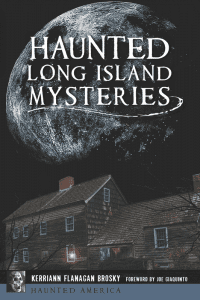 The October session, held on Tuesday Oct. 17 at 6:30 p.m., is a special edition featuring award-winning author and historian, Kerriann Flanagan Brosky, above, along with medium/paranormal investigator Joe Giaquinto. Participants will be delighted with tales of their ghostly adventures which weave local history with the spiritual realm. They will discuss research and investigations behind the making of Haunted Long Island Mysteries, Brosky’s latest book. The lecture will include a PowerPoint presentation of the places they have visited and listening to EVP’s (Electronic Voice Phenomenon) along with fascinating Ghost Box recordings from their field investigations. Books will be available for purchase and signing following the presentation.
The October session, held on Tuesday Oct. 17 at 6:30 p.m., is a special edition featuring award-winning author and historian, Kerriann Flanagan Brosky, above, along with medium/paranormal investigator Joe Giaquinto. Participants will be delighted with tales of their ghostly adventures which weave local history with the spiritual realm. They will discuss research and investigations behind the making of Haunted Long Island Mysteries, Brosky’s latest book. The lecture will include a PowerPoint presentation of the places they have visited and listening to EVP’s (Electronic Voice Phenomenon) along with fascinating Ghost Box recordings from their field investigations. Books will be available for purchase and signing following the presentation.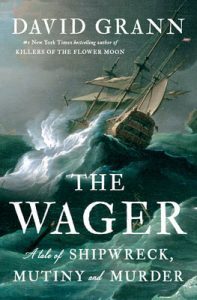 The November session will take place on Tuesday, Nov. 14 at 6:30 p.m. and covers The Wager: A Tale of Shipwreck, Mutiny and Murder by David Grann. Participants will explore one of the most gripping true stories from the high seas where in 1742, a ramshackle vessel of patched-together wood and cloth washed up on the coast of Brazil. Inside were thirty emaciated men, barely alive, and they had an extraordinary tale to tell — later challenged by other survivors with shocking twists of disaster, mutiny, anarchy, and murder. With a story based on six years of research, armchair adventurers will enjoy shipbuilding tools from the museum’s collection on view to the group.
The November session will take place on Tuesday, Nov. 14 at 6:30 p.m. and covers The Wager: A Tale of Shipwreck, Mutiny and Murder by David Grann. Participants will explore one of the most gripping true stories from the high seas where in 1742, a ramshackle vessel of patched-together wood and cloth washed up on the coast of Brazil. Inside were thirty emaciated men, barely alive, and they had an extraordinary tale to tell — later challenged by other survivors with shocking twists of disaster, mutiny, anarchy, and murder. With a story based on six years of research, armchair adventurers will enjoy shipbuilding tools from the museum’s collection on view to the group.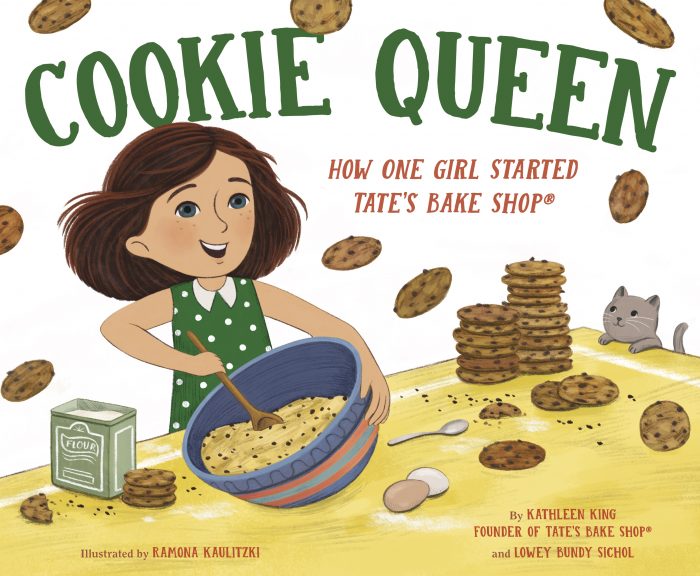
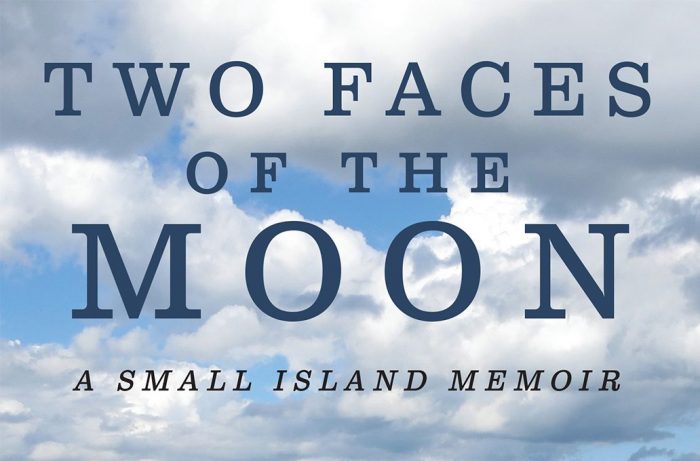
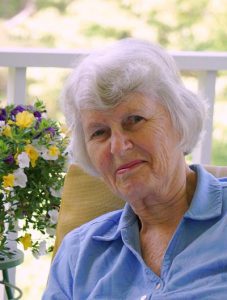
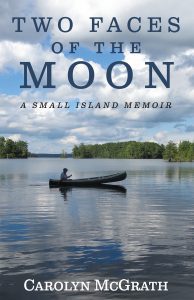 While the book delves into the history of the island, the house, and the lake, Two Faces of the Moon is, first and foremost, a tale of family. McGrath’s vivid, distinctly raw prose recalls the opening line of Tolstoy’s Anna Karenina: “Happy families are all alike; every unhappy family is unhappy in its own way.” She alternates between the 2001 narrative in present tense and musings on her parents’ lives. The intersection creates friction that leads to constant sparks of insight.
While the book delves into the history of the island, the house, and the lake, Two Faces of the Moon is, first and foremost, a tale of family. McGrath’s vivid, distinctly raw prose recalls the opening line of Tolstoy’s Anna Karenina: “Happy families are all alike; every unhappy family is unhappy in its own way.” She alternates between the 2001 narrative in present tense and musings on her parents’ lives. The intersection creates friction that leads to constant sparks of insight.
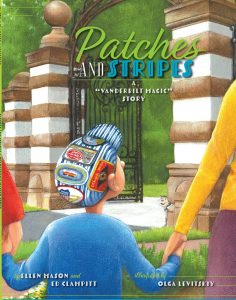 Author Ellen Mason will read her book, Patches and Stripes, one of four scheduled that evening. In it, she and co-author—and Vanderbilt Museum colleague—Ed Clampitt, tell the true story of a family that lost an heirloom during a Museum visit. That tale, in which the heirloom eventually “turned up,” is one the authors call “Vanderbilt magic.”
Author Ellen Mason will read her book, Patches and Stripes, one of four scheduled that evening. In it, she and co-author—and Vanderbilt Museum colleague—Ed Clampitt, tell the true story of a family that lost an heirloom during a Museum visit. That tale, in which the heirloom eventually “turned up,” is one the authors call “Vanderbilt magic.”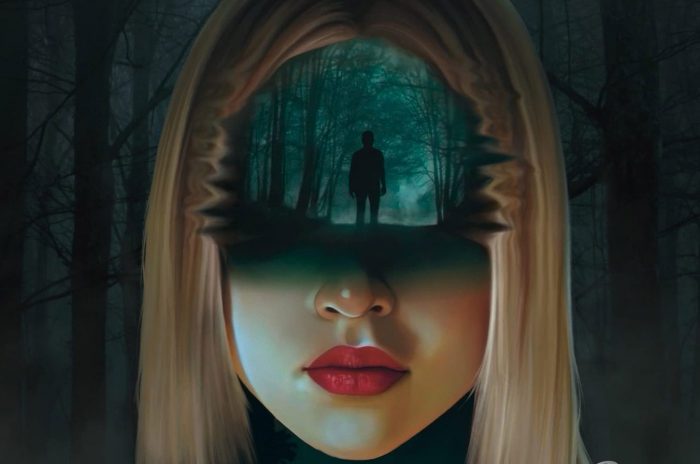

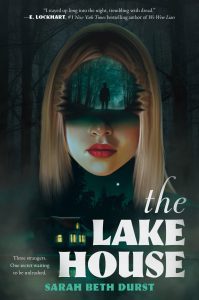 Insightfully—and with no malice—Mariana evaluates Reyva: “My guess: your parents have opinions on what you’re allowed to feel, as well as what you do, and so you respond by controlling what you show the world. Do you want us to think nothing phases you? Fact is, you care a lot, and you’re terrified that someone will realize it and use it against you. Like, you know, I’m doing right now.”
Insightfully—and with no malice—Mariana evaluates Reyva: “My guess: your parents have opinions on what you’re allowed to feel, as well as what you do, and so you respond by controlling what you show the world. Do you want us to think nothing phases you? Fact is, you care a lot, and you’re terrified that someone will realize it and use it against you. Like, you know, I’m doing right now.”
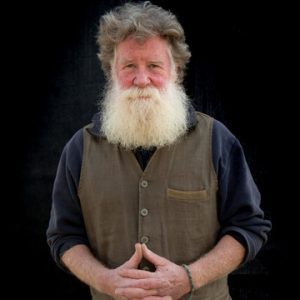
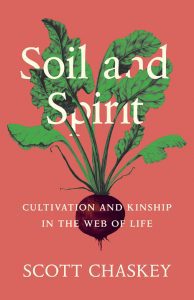 Scott Chaskey is the author of Soil and Spirit. He is also the author of a memoir, This Common Ground: Seasons on an Organic Farm, and a book of nonfiction, Seedtime: On the History, Husbandry, Politics, and Promise of Seeds. His poetry, first printed in literary journals in the early seventies, has been widely published over four decades.
Scott Chaskey is the author of Soil and Spirit. He is also the author of a memoir, This Common Ground: Seasons on an Organic Farm, and a book of nonfiction, Seedtime: On the History, Husbandry, Politics, and Promise of Seeds. His poetry, first printed in literary journals in the early seventies, has been widely published over four decades.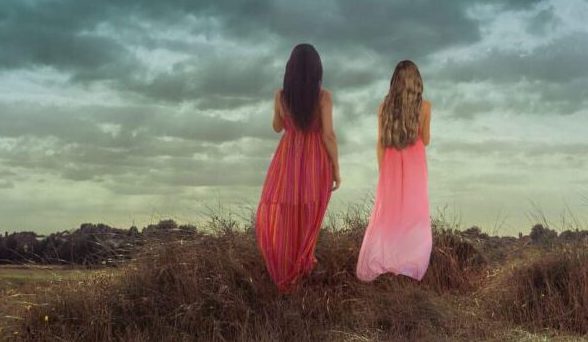
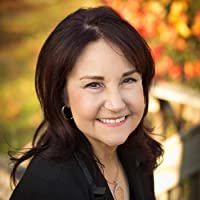
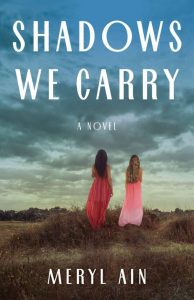 In search of self, Bronka is unsure of her niche. Too intellectually curious to accept a narrow conservative marriage, she is conversely uncomfortable with the free-love, drug-taking hippie element. She constantly faces less than thinly veiled chauvinism and misogyny.
In search of self, Bronka is unsure of her niche. Too intellectually curious to accept a narrow conservative marriage, she is conversely uncomfortable with the free-love, drug-taking hippie element. She constantly faces less than thinly veiled chauvinism and misogyny.


